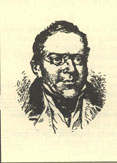

KARL CZERNY
21stFebuary 1791 --- 15thJuly 1857
The Above was written by Mr Philip Hale in 1893.
Last Updated on 2017
By Steven Ritchie
And now for the Music

(1216)"Etude Opus.740, No.19". Sequenced by Reginald Steven Ritchie
(1215)"Etude Opus.740, No.18". Sequenced by Reginald Steven Ritchie
(1162)"Etude Opus.740, No.17". Sequenced by Reginald Steven Ritchie
(1095)".Etude Opus.740, No.16 Sequenced by Reginald Steven Ritchie
(1096)"Etude Opus.740, No.15". Sequenced by Reginald Steven Ritchie
(1009)"Etude Opus.740, No.14". Sequenced by Reginald Steven Ritchie
(1008)"Etude Opus.740, No.13". Sequenced by Reginald Steven Ritchie
(983)"Etude Opus.740, No.12". Sequenced by Reginald Steven Ritchie
(982)"Etude Opus.740, No.11". Sequenced by Reginald Steven Ritchie
(953)"Etude Opsu.740, No.10". Sequenced by Reginald Steven Ritchie
(952)"Etude Opus.740, No.9". Sequenced by Reginald Steven Ritchie
(889)"Etude Opus.740, No.8". Sequenced by Reginald Steven Ritchie
(870)"Etude Opus.740, No.7". Sequenced by Reginald Steven Ritchie
(863)"Etude Opus.740, No.6". Sequenced by Reginald Steven Ritchie
(855)"Etude Opus.740, No.5". Sequenced by Reginald Steven Ritchie
(846)"Etude Opus.740, No.3". Sequenced by Reginald Steven Ritchie
(831)"Etude Opus.740, No.2". Sequenced by Reginald Steven Ritchie
(813)"Etude Opus.740 No.1". Sequenced by Reginald Steven Ritchie
Thanks to Emily Gray for the music below. Email (HappyMusician@opendiary.com)
(2583)"Dancing the Jig". Sequenced by Emily Gray Thanks to John Scarborough for the music below Email (johnwes@southernx.com.au)
(1052)"Etude Opus.299, No.34". Sequenced by John Scarborough (35a)"Etude Opus.740, No.11". Sequenced by V Phillips (36a)"Etude Opus.740, No.44". Sequenced by V Phillips (37a)"Etude Opus.704, No.50". Sequenced by V Phillips (38a)"Etude Opus.740, No.4". Sequenced by V Phillips

If you done any Classical pieces of say for example, Delius, mozart, and so on etc,
please email them to the classical music site with details to
"classical (@) ntlworld.com" written this way to stop spammers
just remove spaces and brackets for email address, thank you.

Visitors to this page --

Back to Classical Midi Main Menu click "HERE"